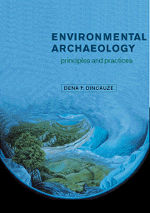Book contents
- Frontmatter
- Contents
- List of figures
- List of tables
- Preface
- Acknowledgments
- Glossary
- PART I INTRODUCTION
- PART II CHRONOLOGY
- PART III CLIMATE
- PART IV GEOMORPHOLOGY
- PART V SEDIMENTS AND SOILS
- PART VI VEGETATION
- PART VII FAUNA
- 15 FAUNAL PALEOENVIRONMENTS: CONCEPTS AND METHODS
- 16 FAUNAL PALEOECOLOGY
- 17 HUMANS AMONG ANIMALS
- Case Study: Howdowe read these bones? Seasons of use at Star Carr
- PART VIII INTEGRATION
- References
- Index
16 - FAUNAL PALEOECOLOGY
Published online by Cambridge University Press: 20 January 2010
- Frontmatter
- Contents
- List of figures
- List of tables
- Preface
- Acknowledgments
- Glossary
- PART I INTRODUCTION
- PART II CHRONOLOGY
- PART III CLIMATE
- PART IV GEOMORPHOLOGY
- PART V SEDIMENTS AND SOILS
- PART VI VEGETATION
- PART VII FAUNA
- 15 FAUNAL PALEOENVIRONMENTS: CONCEPTS AND METHODS
- 16 FAUNAL PALEOECOLOGY
- 17 HUMANS AMONG ANIMALS
- Case Study: Howdowe read these bones? Seasons of use at Star Carr
- PART VIII INTEGRATION
- References
- Index
Summary
Variety … seems to be the dominant aspect of paleoecological situations.
OLSON 1980: 9–10The truly dynamic components of the biosphere are members of the Animal Kingdom, most of whom are capable of motion and intentional behavior. Behavior (e.g., feeding, competition, migration, cooperation) immensely complicates environmental modeling by reducing predictability in system states. Here, the emphasis is on describing and interpreting the faunal components of past ecosystems, including humans, as a basis for understanding paleoecology.
Paleoenvironmental reconstruction has been important in paleontology for a very long time, beginning two centuries ago in the fossiliferous Paleolithic caves of Europe. However, interest in paleoenvironmental reconstruction from archaeological faunas did not travel intact across the Atlantic (Grayson 1981). The best American work in the genre has been done by paleontologists, whether or not working for archaeologists (e.g., Graham, Guilday, Guthrie, Klippel, Parmalee). The problem in America seems to derive from the fact that few paleontologists are interested in Holocene faunas, while neoecologistswork in a timeless dimension that assumes the validity for ancient times of actualistic study in present conditions. Consequently, the development of critical theory for paleoenvironmental reconstruction from archaeological faunas in the Americas has been delayed, to the detriment of research designs and excavation strategies. Archaeozoology with an environmental emphasis is more at home in the rest of the world than in the western hemisphere, where autecological studies are in short supply and zooarchaeological emphases on human behavior dominate the archaeological literature.
Admittedly, there are stringent limitations to the applicability of archaeological data for paleoenvironmental work with fauna, as indicated below.
- Type
- Chapter
- Information
- Environmental ArchaeologyPrinciples and Practice, pp. 444 - 467Publisher: Cambridge University PressPrint publication year: 2000

